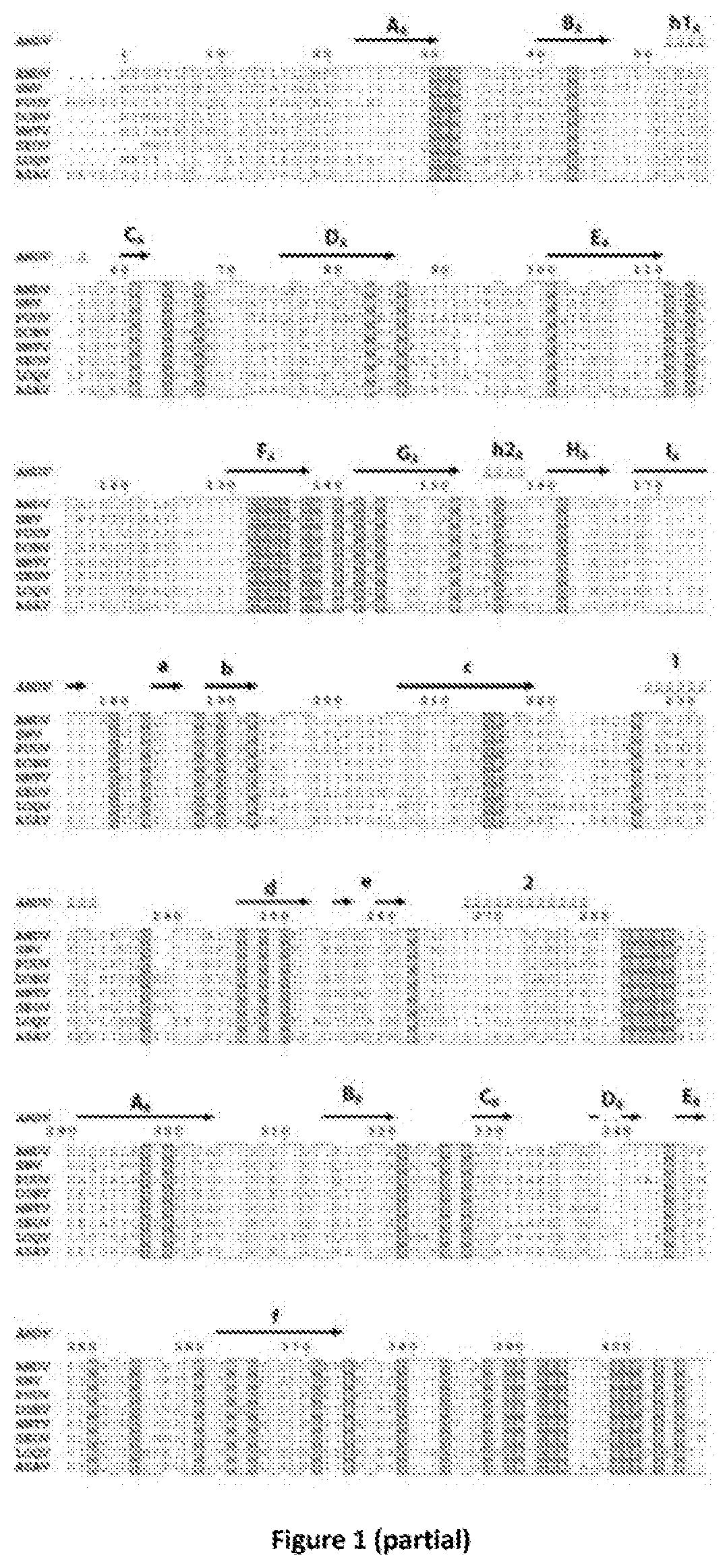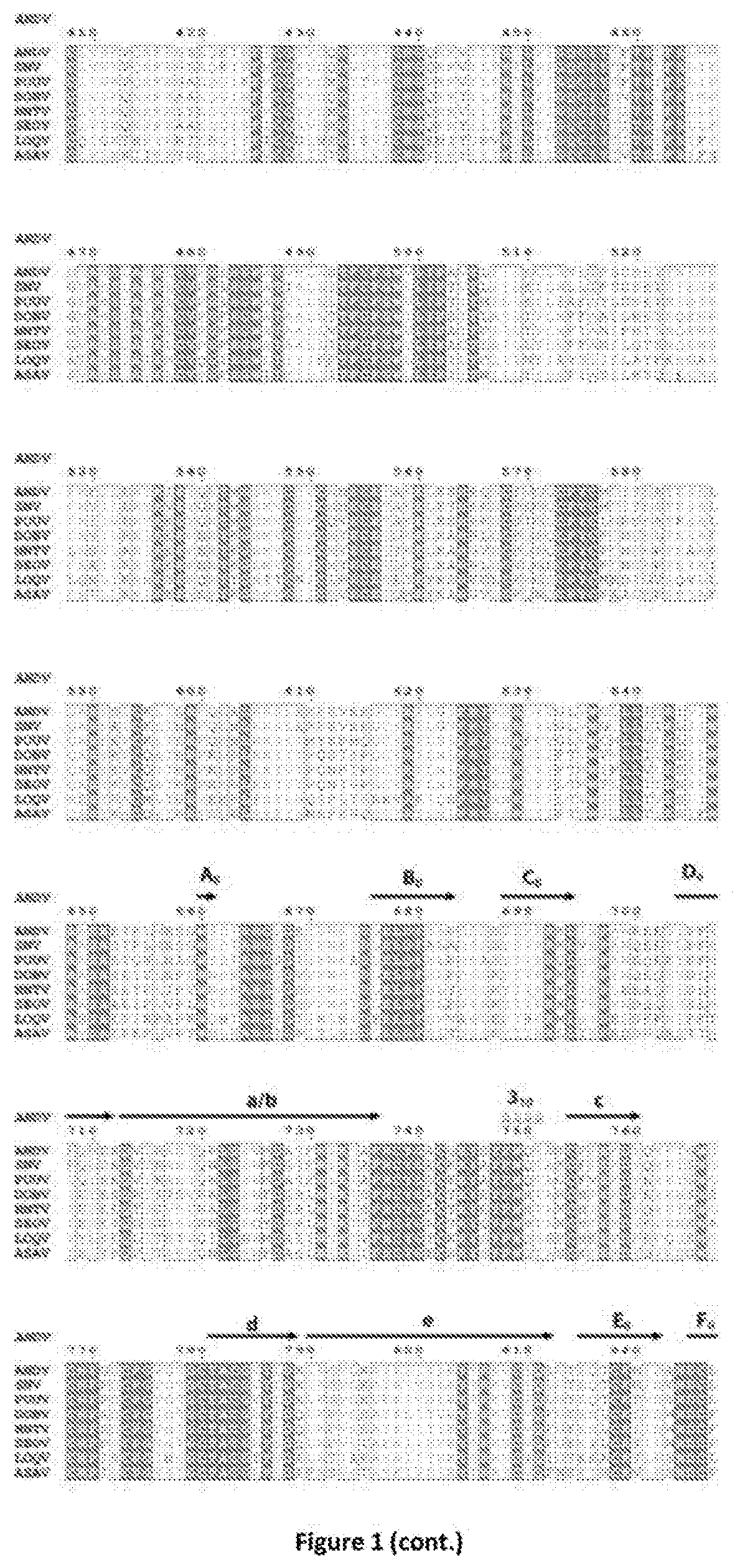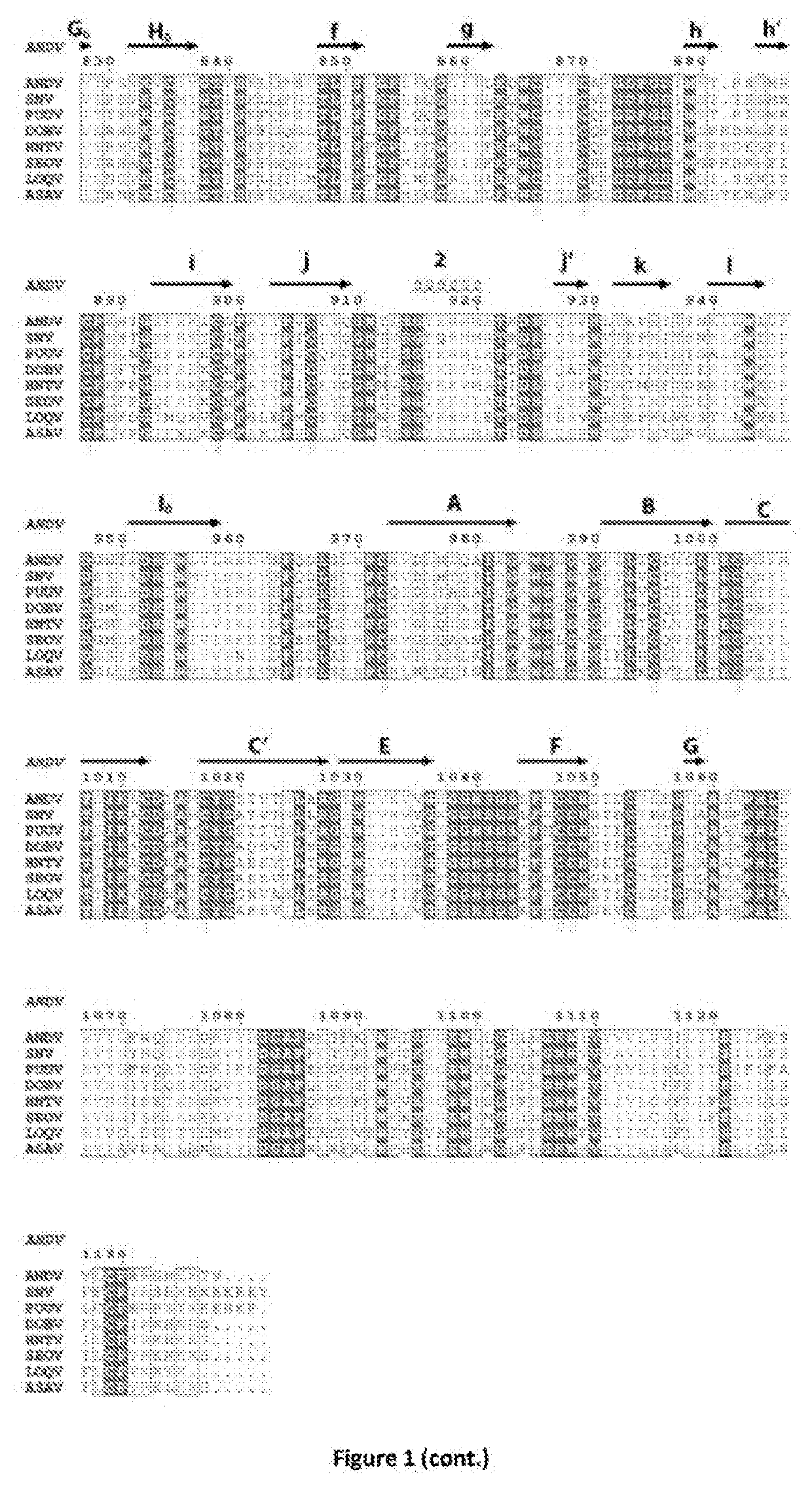Engineered spike proteins of hantaviruses and uses thereof
a technology of hantavirus and spike protein, which is applied in the field of preventing and treating hantavirus infections, can solve the problems of difficult to achieve acceptance of such an approach to be used in healthy humans, and ineffective broad-spectrum antivirals such as ribavirin, etc., and achieve the effect of high infection ra
- Summary
- Abstract
- Description
- Claims
- Application Information
AI Technical Summary
Benefits of technology
Problems solved by technology
Method used
Image
Examples
example 1
tion and Design of Amino Acid Modifications for Improved Stability of the Hantaviral Spike
[0187]In order to face the technical challenge to improve the spike stability, for the generation of improved immunogens, we used structural information to identify and select key positions and regions in the hantaviral spikes that allow the design of sequence modifications for their stabilization.
[0188]The molecular structures of the ectodomains of the hantavirus Gn and Gc proteins have been described in their monomeric conformations; however information was still missing concerning their orientation in the hantaviral spike and their molecular contacts for a molecular perspective on their assembly and the design of preventive or therapeutic strategies.
[0189]In the present example, the inventors have obtained novel molecular structures that describe the contacts of the Gn / Gc assembly. Among these structures, two particular structures have been obtained from two different expression constructs s...
example 2
n and Folding of Hantaviral Spike Mutants
[0217]The present example of the Invention provides information on how the inventors experimentally assess whether the design of recombinant hantaviral spikes are expressed and properly folded in cells.
[0218]In this example we used the plasmid pl.18 / GPC coding for the Gn / Gc glycoproteins of Andes orthohantavirus CHI-7913 isolate GenBank accession number AA086638.1 (Cifuentes-Muñoz et al., 2010) as a model for all hantaviral Gn / Gc coding plasmids and Introduced nucleotide mutations using standard oligonucleotide-based PCR amplification technique.
[0219]The expression and folding of each mutant construct was assessed by transient transfection of 293FT cells (Invitrogen) and subsequent biotinylation of cell surface proteins as previously described (Guardado-Calvo et al., 2016). The presence of the Gn / Gc proteins in the biotinylated (cell surface proteins) and non-biotinylated fractions (intracellular proteins) was tested by western blot using the...
example 3
t of Inter-Chain Disulfide Bonds in Hantaviral Spikes
[0223]In this examples, the inventors provide evidence, that the Gn / Gc proteins that contain amino acid substitutions by Cys, are close enough on the viral particles to allow the formation of disulfide bonds across the different Gc / Gc and Gn / Gc interfaces.
[0224]To improve the hantaviral Gc spike stability, we have designed several inter-chain disulfide bonds between Gc / Gc homodimers, Gn / Gc heterodimers and Gn / Gn homooligomers (see Example 1) based on the Gn / Gc and Gc / Gc crystal structures and Gn / Gc structure fitting into the Cryo-EM density map (Shi et al., 2016). Some inter-chain disulfide bonds may involve the substitution of single residues in each monomer (for example the substitutions Gc G838C) since in such case these residues are facing each other at the center of the 2-fold axes of the Gc homodimer. In other cases, we have designed a pair of Cys substitutions of residues that are opposing each other at any of the homodimer...
PUM
| Property | Measurement | Unit |
|---|---|---|
| Electric charge | aaaaa | aaaaa |
| Electric charge | aaaaa | aaaaa |
| Electric charge | aaaaa | aaaaa |
Abstract
Description
Claims
Application Information
 Login to View More
Login to View More - R&D
- Intellectual Property
- Life Sciences
- Materials
- Tech Scout
- Unparalleled Data Quality
- Higher Quality Content
- 60% Fewer Hallucinations
Browse by: Latest US Patents, China's latest patents, Technical Efficacy Thesaurus, Application Domain, Technology Topic, Popular Technical Reports.
© 2025 PatSnap. All rights reserved.Legal|Privacy policy|Modern Slavery Act Transparency Statement|Sitemap|About US| Contact US: help@patsnap.com



